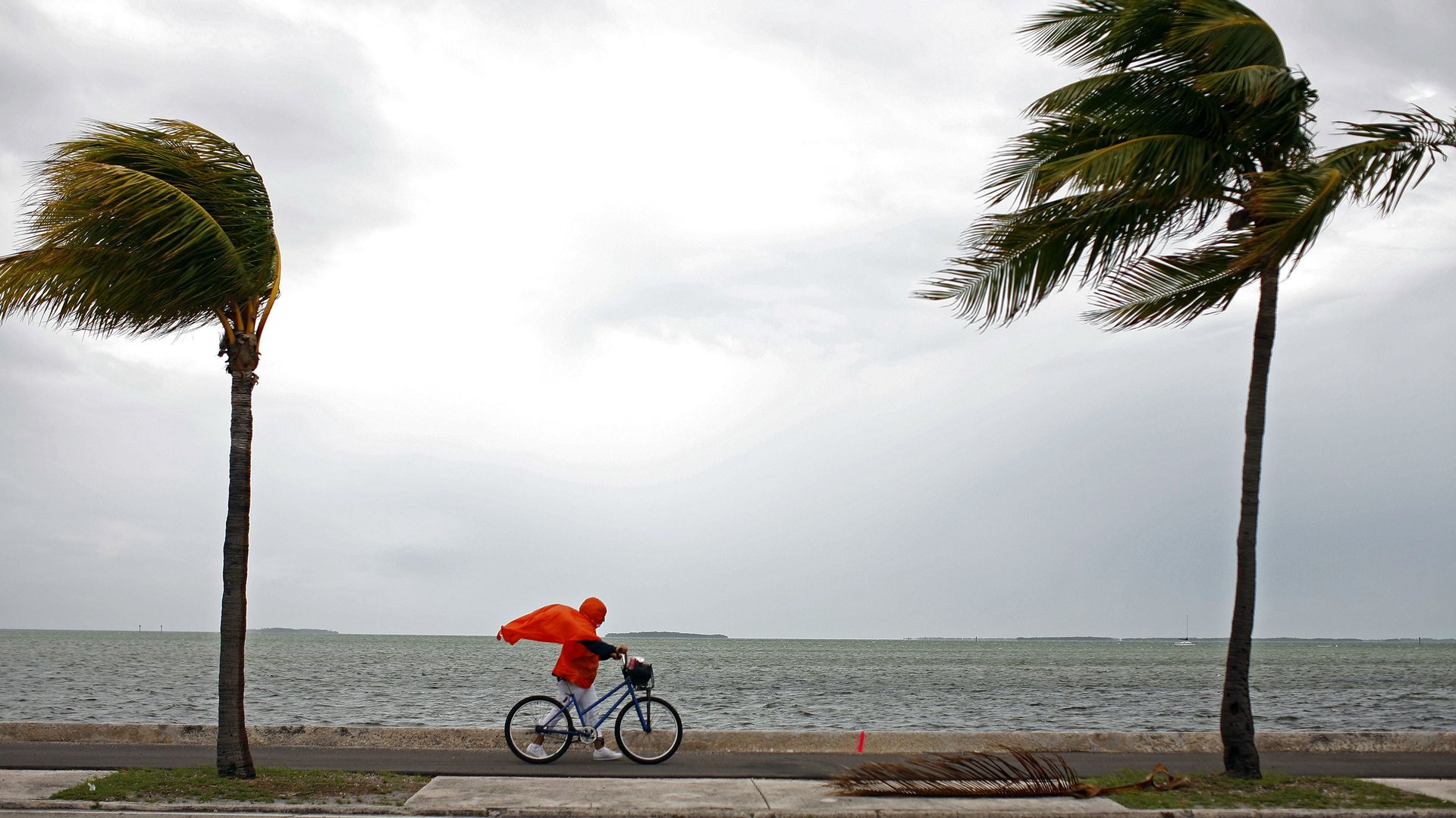Hurricane Irma is closing in on the Caribbean. Here’s what you need to know
This post has been updated as of Sept. 5, 10:30 am.


This post has been updated as of Sept. 5, 10:30 am.
In the aftermath of the devastating Hurricane Harvey in Texas and Louisiana, forecasters are keeping a close eye on Hurricane Irma, a category five storm that’s in the middle of the Atlantic Ocean quickly approaching the Leeward Islands and heading west.
How dangerous is Hurricane Irma?
The storm is traveling about 14 miles per hour (22 kilometers per hour), and is expected to hit the West Indies Tuesday afternoon, according to the National Hurricane Center. The full effects of the hurricane will hit around 2 am local time.
Already, Irma’s winds have reached 175 miles per hour (282 kilometers per hour). The storm has grown substantially stronger from Monday, when maximum wind speeds were 115 miles per hour. Hurricane warnings have been issued for the Lesser Antilles islands, Puerto Rico, and the British and US Virgin Islands.
CNN’s meteorologist Brandon Miller said that Irma is a fairly typical example of a “Cape Verde storm,” which start brewing over the east coast of Africa in an area now known as Cabo Verde. Hurricanes start off as thunderstorms that result from low pressure air systems over warm waters. They gather wind strength as higher pressures quickly move in to fill in the low pressure areas. Cape Verde storms have their entire trip across the Atlantic to gain wind power, which makes them some of the strongest hurricanes.
Other Cape Verde storms have included Hurricane Hugo, a devastating storm that took a similar path in 1989 and Hurricane Floyd, which hit the east coast of the US a decade later. Irma’s travel time across the Atlantic has meant that the storm has had time to gather more energy than Hurricane Katrina in 2005—possibly one of the strongest storms in recorded history.
Will Hurricane Irma hit the US mainland?
According to the National Hurricane Center, there is an “increased likelihood” that Hurricane Irma will hit the Florida keys and peninsula. Official forecasts can only predict up to five days at a time. If Irma reaches Florida, it wouldn’t be until early Friday morning local time.
In any case, Florida governor Rick Scott has declared a state of emergency so that “resources are dispersed to local communities as we get prepared for this storm.” He tweeted that he has spoken with Donald Trump, who has offered him “full resources of the federal government as Floridians prepare for Hurricane Irma.”
Tom Sater, a meteorologist at CNN has said that there is a small chance that the storm’s path will swing eastward into the Atlantic ocean as it travels north, missing the mainland United States. “But that window is shutting quickly,” he said. In all likelihood, Florida will be hit, and meteorologists are concerned that until then, the storm will only continue to gather strength.